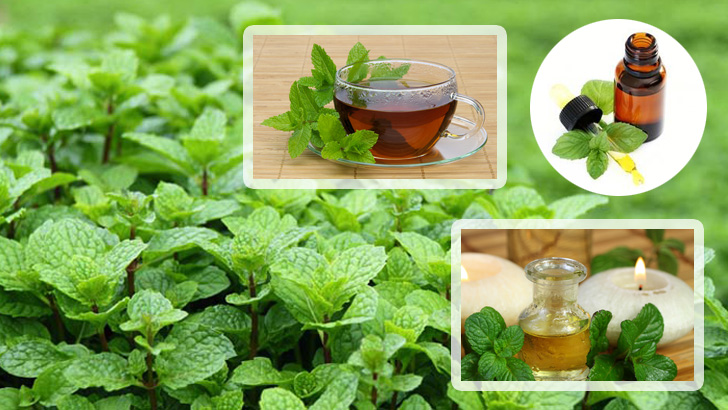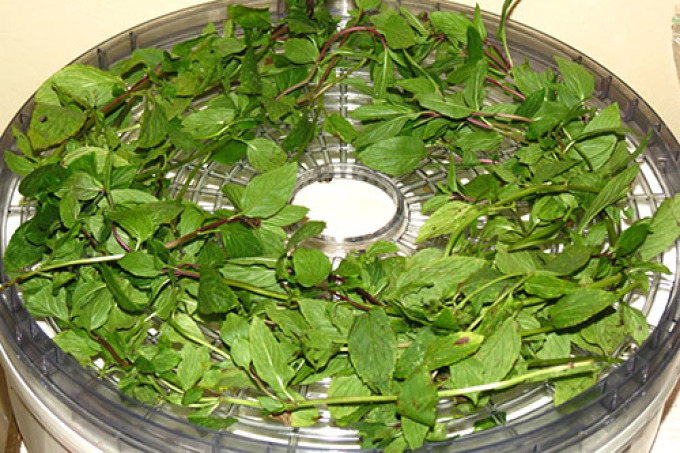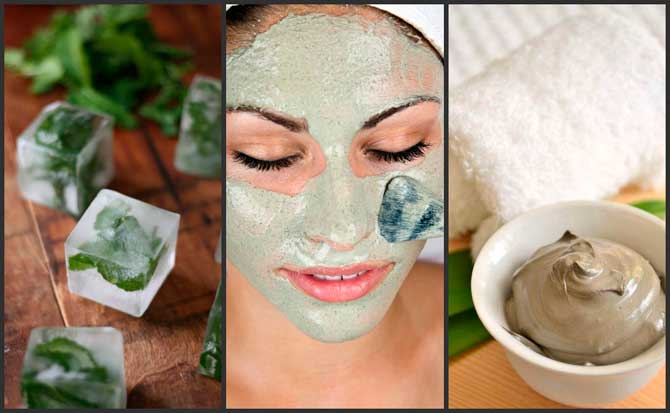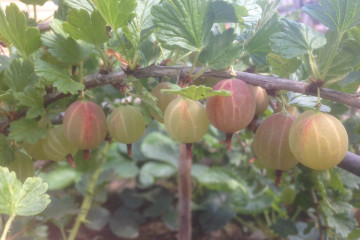When to harvest peppermint for drying?
Content:
Refreshing and invigorating scent, pleasant coolness and characteristic taste - these are all about peppermint. It is a perennial medicinal and industrial plant 30-90 cm high. Homeland - China and Japan.
Why is peppermint good for you?
Peppermint essential oil has many positive characteristics. Its use can be found in many foods and everyday products.
Positive properties of mint:
- Has a cooling effect. When it gets on the mucous membranes, it excites the nerve endings, activating the cold receptors. In this case, the vessels of the upper layers narrow, and the internal ones reflexively expand. Thus, pain cider is reduced.
- Normalizes the work of the digestive glands, reduces fermentation processes in the digestive tract, normalizes metabolism, reduces the tone of intestinal smooth muscles.
- Improves the work of the biliary and urinary tract.
- It is used for asthma.
- It has a sedative and mild hypotensive effect.
- Preparations from the leaves of this plant regulate blood circulation, reduce intracranial pressure.
- It is a fast-acting external remedy for severe headache. May interfere with sleep in high doses.
- Menthol has a disinfectant effect. Mint contains essential oils that act on a number of bacteria and staphylococcus aureus.
- Mint infusions help to refresh and tone the skin of the face, make it more elastic, reduce irritation and inflammation.
Obviously, it is difficult to overestimate the beneficial qualities of mint. Therefore, if there are no contraindications for use, it can be included in your diet.
When to harvest peppermint for drying
When planning harvesting for the winter, you need to know when to cut the mint, how to collect and store it.
But for this, you first need to find out when to harvest mint, because mistakes made in collecting it will not allow you to preserve the maximum useful properties of this medicinal herb.
A dilemma often arises: when to collect peppermint for harvesting it for the winter. Mint is harvested in mid-summer, July-August, when it reaches a height of 20-30 cm. Then the plant is filled with essential oils as much as possible and bears the greatest value.
Harvesting mint for the winter
There are many options for harvesting green spices for the winter. In order to preserve the workpiece for a long time and delight yourself with the specific aroma of this plant until the next season, but at the same time to avoid rotting of the raw material, it is dried. This is the simplest and most common way.
You can freeze fresh twigs and leaves. This way they will not lose their spicy taste. However, the appearance of the plant will become unpresentable, and the color after freezing will change to brown-green. To freeze, the leaves or twigs should be rinsed in water and blotted with excess moisture. Next, place in a plastic container and freezer.
Some foodies harvest mint in the form of ice cubes. It must be carefully cut, put in ice cube trays and filled with boiled water. These cubes can be used to make sauces. If you add a slice of ginger and lemon, you get a fragrant addition to tea.
When to dry mint before flowering or after
If you need raw materials for the extraction of essential oil, then when you need to collect mint leaves, the appearance of flowers on it will tell you. It, like lemon balm, should be cut during the full flowering period, when the plant contains the maximum extract.
If mint is needed for ordinary homemade preparations for the winter, then the period before the beginning of flowering is suitable, namely, before the buds appear on it. During this period, the stems are not yet very stiff, the leaf is large and fresh along the entire height of the plant. Therefore, in order to choose the time when you need to harvest, you should focus on the flowering stage of the plant.
How to get the most of aroma, taste, and health benefits
In order for the blank to show all its qualities, you need to adhere to some rules.
Here are some tips for choosing dry mint:
- You should not pick mint near the road or within the city, as the plant has already absorbed harmful substances from the earth and the environment, and at the same time the beneficial properties are nullified.
- Too young mint sprouts have a small amount of useful substances, and when they dry out, they lose their benefits even more.
- In order for the bush to delight with several harvests per season, you need to know how to cut mint correctly. The cut of the stem must be done at the very ground and not cut off. In addition, the plant should be cut to a third of its length.
- The collection is carried out in the morning, since at this time of the day the plant contains the largest amount of essential oil. Harvested two to three times during the entire growing season.
By adhering to these recommendations, you can get more benefit from the plant and collect more than one crop from it per season.
Cut the stems with scissors or a knife. If the collection takes place in a clean area, then it is better not to rinse the branches before drying so that they do not gain excess moisture. If there is a need for cleansing, then the stems should be immersed in water, and then shaken well.
How to properly dry mint to preserve nutrients
Dry the stems under a canopy in a dry, ventilated place on paper or cloth, periodically turning them over to avoid decay. After drying, they are folded into a tightly closed container. You can tie twigs into loose bunches and hang them to dry in the open air in the shade, or cut the stems into small pieces and spread them on the surface.
Drying takes place within 2-3 weeks. If the leaf is easily separated from the stem, and the stem itself breaks easily, then drying is complete.
If it is not possible to dry in the open air, then special dryers for vegetables and fruits are used. This device generates warm air currents at the optimal temperature and passes them through the trays, on which fresh food is laid out for drying. With the help of such a gadget, you can dry any herbs for homemade preparations.
How to store dried mint throughout the winter
For easy storage, dry leaves can be separated from the stems.They are brewed as tea or infusion, and individual leaves are ground and used as a seasoning for dishes.
Dry mint harvested for the winter is well stored in tightly closed glass jars or in cloth bags. You can also use plastic bags or cling film, but leave a small hole for air to enter.
The shelf life is 1.5 years.
How to use dried mint
Peppermint has found its way into many culinary, cosmetic and medical applications.
The leaves are added as a spice to minced meat, offal pâtés, homemade sausages, when braising lumpy meat, and to add flavor to meat salads, snacks, sandwiches and soups. In confectionery dishes, they are introduced into cookies, gingerbreads, buns. This spice perfectly complements compotes, jelly, fruit drinks, tinctures, kvass, lemonades.
In cosmetology, this medicinal herb is actively used to prepare lotions, masks, tonics, creams, ointments, and compresses at home. Dried mint is used to make aroma oils, scented pillows and sachets.
To prepare a mint face mask, you need to take 2 tablespoons of crushed leaves, pour hot water over them to make a mushy mass. Next, you should heat it up to 60-70 ˚С, then cool slightly. The mask should be warm - 37-40 ˚С. It is applied to a cleansed face, which is then covered with clean, slightly wet gauze, folded in several layers.
The duration of the mask is 15-20 minutes.
Having figured out how and when to properly collect mint for drying - before or after flowering - as well as learning how to harvest it for the winter, you can use its healing properties all year round.




















